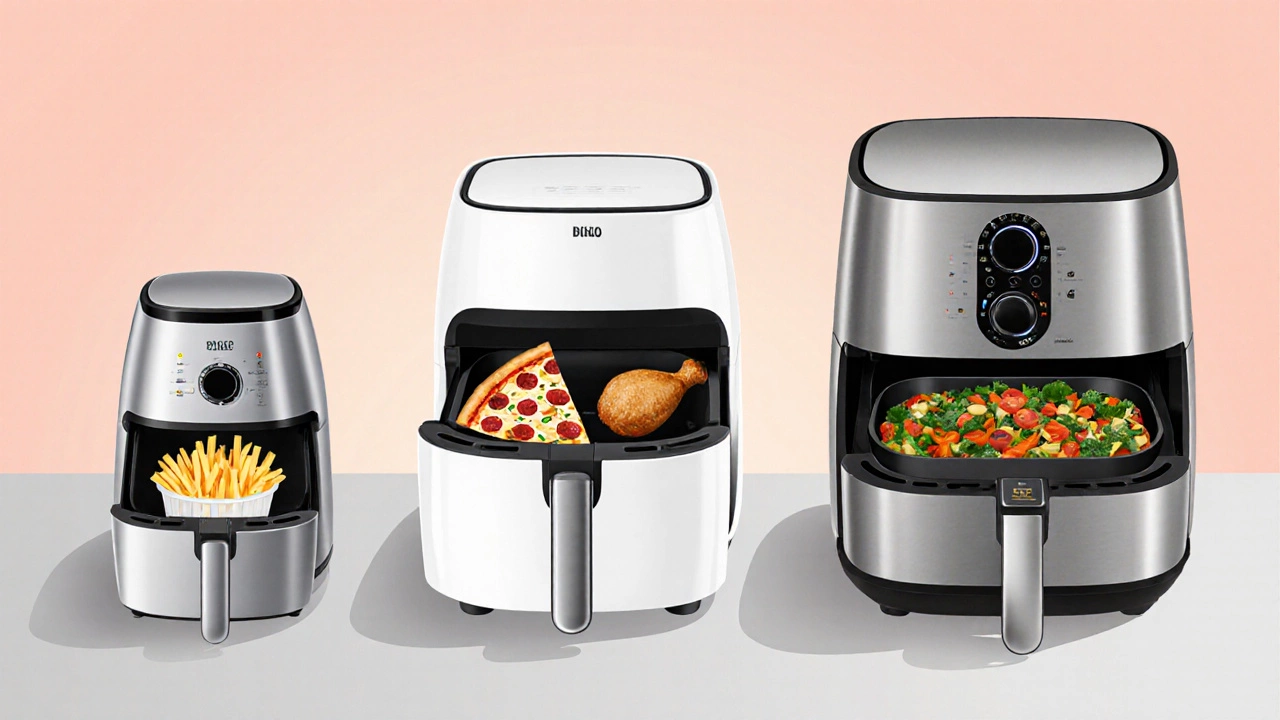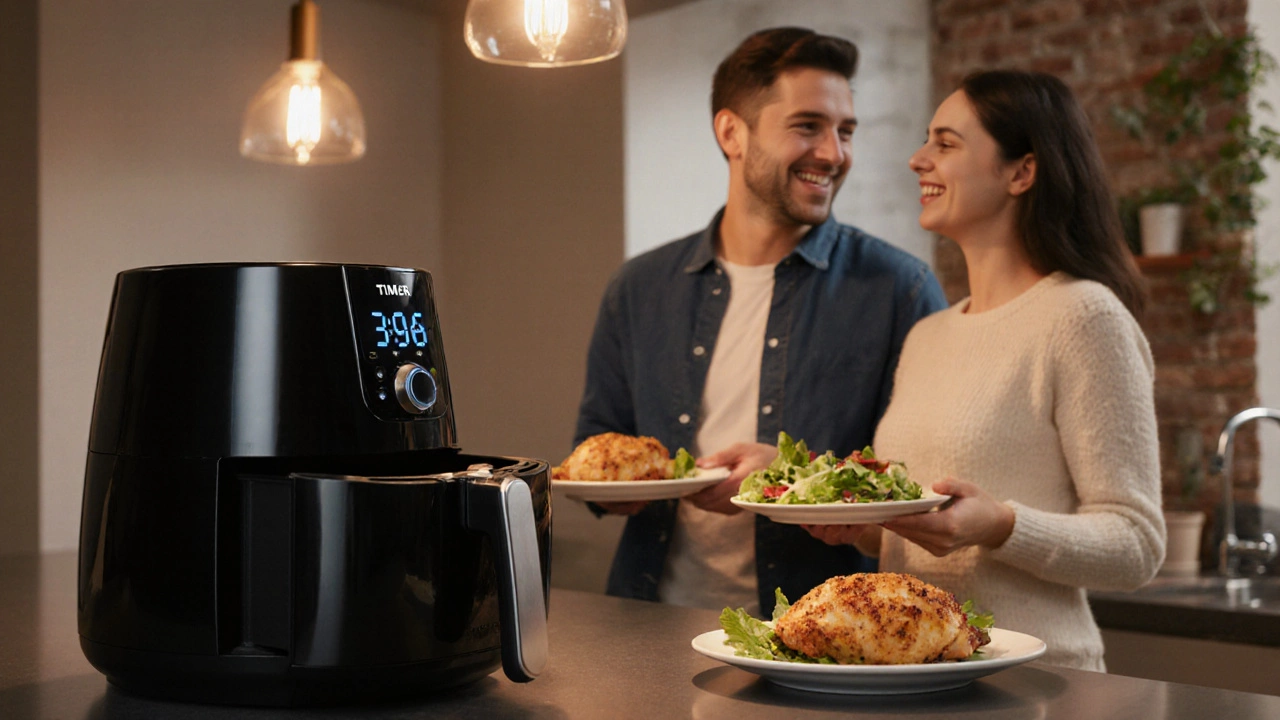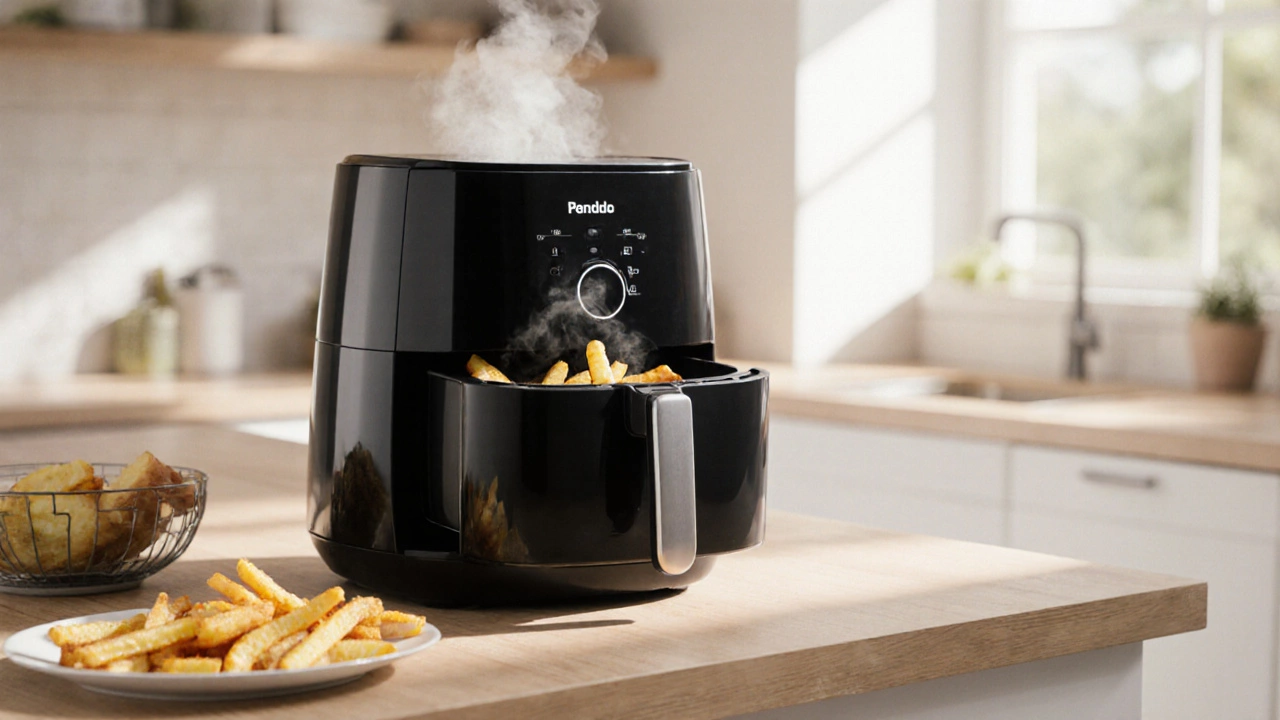Air Fryer Size Calculator
Find Your Perfect Air Fryer Size
Select your household size and cooking habits to get personalized recommendations based on 2025 models.
Recommended Size
Why this size?
Energy Savings Tip
When you’re cooking for just one or two meals a day, the Air fryer is a kitchen game‑changer. It circulates hot air fast enough to crisp french fries, roast veggies, or bake a small batch of cookies without the oil splash you’d get in a deep‑fat fryer. But the real question is: air fryer size matters more than you think, especially in a small household. Below you’ll find a step‑by‑step rundown of how to pick the perfect capacity, what features matter, and which models give the best bang for your buck in 2025.
Why Capacity Is the First Deal‑Breaker
Capacity is measured in liters and tells you how much food you can fit in a single cooking cycle. For a solo diner or a couple, a 2‑to‑3L basket usually handles a serving of fries, a chicken breast, or a couple of pastries. Anything larger tends to waste space and energy, while anything smaller forces you to cook in multiple batches - and that defeats the whole point of a fast, hassle‑free meal.
Three Size Categories Explained
We’ll break the market into three buckets that line up with real‑world usage:
- Compact (1.5‑2.5L) - Ideal for single‑serve snacks, reheating leftovers, or a quick side dish.
- Mid‑range (3‑5L) - Perfect for two people; you can fit a full‑size chicken thigh, a family‑size portion of fries, or a small pizza.
- Large (6L+) - Suited for families or batch‑cooking; generally overkill for 1‑2 people.
Key Attributes to Pair With Size
Once you’ve narrowed down the liter range, compare these specs to avoid surprises.
- Wattage: Higher watts mean hotter air and shorter cooking times. A 1500‑W model is a sweet spot for 2‑5L units.
- Temperature range: Look for 180‑400°F (80‑200°C). Lower‑end models may cap at 350°F, limiting certain recipes.
- Preheat time: Faster preheat (under 2min) saves energy and keeps meals quick.
- Cooking basket material: Non‑stick coated metal or ceramic interiors make cleanup painless.
- Digital controls vs. manual dials: Digital panels often include preset programs for fries, chicken, fish, and even cake.
Real‑World Scenario Comparisons
Below is a quick‑look table that matches size to everyday meals. All figures are averages from 2024‑2025 model releases.
| Size (Liters) | Ideal for | Typical Wattage | Price Range (CAD) |
|---|---|---|---|
| 1.5‑2.5 | One‑person snacks, reheating, small side dishes | 1200‑1400W | 90‑150 |
| 3‑5 | Two‑person meals, whole chicken breast, small pizza | 1500‑1800W | 150‑250 |
| 6+ | Batch cooking, family‑size portions, roasts | 1800‑2000W | 250‑350 |

Top Picks for 1‑2 People (2025)
We’ve tested dozens of units in our Vancouver kitchen lab. Here are the three that consistently beat the competition in their size class.
- Compact Champion - Ninja Air Fryer 2‑L: 1200W, 30‑minute timer, auto‑shutoff, and a sleek black finish. Great for single‑serving fries and reheating pizza slices. Priced at $119 CAD.
- Mid‑Range Favorite - Philips Premium 4‑L Airfryer XXL: 1500W, 7 preset programs, Rapid Air™ technology, and a dishwasher‑safe basket. Handles a full chicken thigh or a personal pizza with room to spare. Costs $199 CAD.
- Budget Buddy - Cosori 3‑L Air Fryer: 1400W, 8‑inch digital display, detachable non‑stick basket, and a 3‑year warranty. Ideal for couples who want value without sacrificing performance. $129 CAD.
How to Match Size With Kitchen Real Estate
Even if a 3‑L unit fits your portion needs, it might not fit on a cramped countertop. Measure the width of your working surface and add at least 2‑3inches for ventilation. Most manufacturers list dimensions in the specs sheet; look for a footprint under 12inches wide for optimal countertop compatibility.
Energy Consumption Tips
Smaller units consume less electricity per batch. If you frequently cook under 15minutes, a 1.8‑L model will use roughly 0.3kWh per session, while a 5‑L model burns about 0.6kWh for the same dish. Over a year, that difference can add up to $30‑$40 in electricity savings.

Maintenance Hacks to Extend Lifespan
Regardless of size, keep the following habits:
- Wipe the interior after each use - grease buildup reduces crisping efficiency.
- Soak the basket in warm, soapy water for 5minutes before scrubbing - this preserves the non‑stick coating.
- Check the heating element quarterly for carbon deposits; a soft brush removes residue without damaging the element.
- Never overload the basket - proper air flow is key to even cooking.
Bottom Line: Size Matters, But Balance Is Key
If you’re the only one feeding yourself or sharing meals with a partner, a 3‑5L air fryer hits the sweet spot. It gives you enough capacity for most meals, keeps energy use reasonable, and still sits comfortably on a modest countertop. Skip the 6‑L behemoth unless you regularly host dinner parties.
Frequently Asked Questions
What is the ideal capacity for a single person?
A 1.5‑2.5L basket comfortably fits a single serving of fries, a portion of chicken, or a reheated plate of leftovers. It also uses the least electricity per batch.
Can I cook a whole chicken in a 4‑L air fryer?
Yes, most 4‑L models can accommodate a standard 1.2‑kg whole chicken. Just make sure the drumsticks don’t touch the heating element for even browning.
Do larger air fryers take longer to preheat?
Generally, yes. A 6‑L unit may need up to 4minutes to reach 400°F, while a 2‑L model typically hits the same temperature in 2minutes. Faster preheat translates to quicker meals.
Is the non‑stick coating safe?
Most modern air fryers use PTFE‑free ceramic coatings that are PFOA‑free and dishwasher safe. They’re considered safe for everyday cooking, but avoid metal utensils to prolong lifespan.
How much electricity does a 3‑L air fryer use per hour?
A typical 1500‑W 3‑L model consumes about 1.5kWh if run continuously for an hour. Most recipes, however, finish in 10‑20minutes, so actual usage is far lower.

